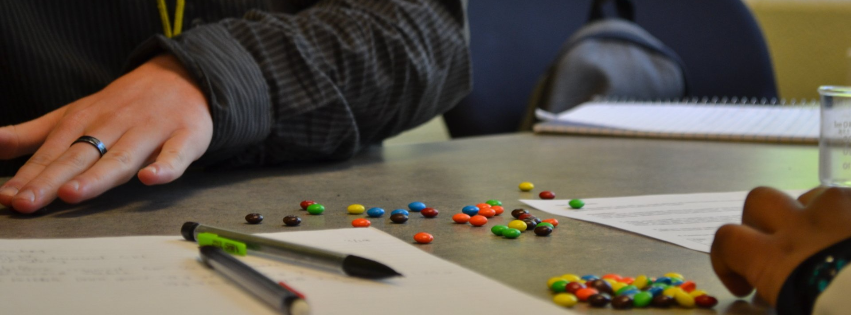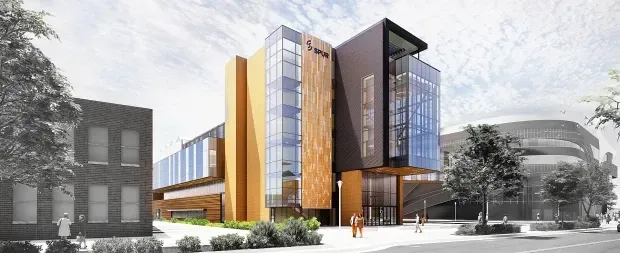Afterschool programs have always provided kids a safe place to gather after formal classes end and try new things without the pressure of grading. But during the pandemic, when schools nationwide halted in-person education, afterschool programs rallied to help children continue their learning virtually. These efforts included delivering to students needed classroom supplies and meals usually served during the school day, said Christopher Neitzey, director of STEM initiatives for the Afterschool Alliance. And, as the pandemic eases and schools reopen, Neitzey says that afterschool programs will continue to play an important role as students “re-engage” with learning. As part of pandemic-relief legislation, there is public money available to help. Neitzey offered information on his organization, afterschool-program funding and more about the crucial part these programs play at this pivotal time:
National funding for afterschool STEM arrives at critical time
Q: Tell us about the Afterschool Alliance – what is it, why was it created, what does it do and how does it benefit those involved with afterschool programs?
A: The Afterschool Alliance is a nonprofit established in 2000 to support and expand afterschool and summer learning opportunities nationwide. We’re based in Washington, D.C., so much of our advocacy work is focused at the federal level and typically involves working with Congress.
Our organization supports increased investment in afterschool through the 21st Century Community Learning Centers program, works with partner organizations and stakeholders to craft legislation to support the field, and works with agencies such as the department of Education and Labor and the National Science Foundation to represent the interests of afterschool programs and ensure they can operate effectively.
We see our role as elevating the voices of the afterschool field to Congress, the administration and federal agency partners so they can succeed in supporting youth.
Q: Why are afterschool programs so important now, especially with the effects of the pandemic on regular schooling? How can afterschool programs ease the effects of virtual and hybrid learning on students or help enhance students’ learning?
A: Afterschool programs provide a safe place for young people to go after the school day ends. We’ve seen through our research (America After 3PM) how much parents value having a place for their kids to go after school, and that afterschool programs not only offer young people a safe place that can support their academic, social and emotional needs but also provide parents peace of mind while they’re at work.
Afterschool programs also let students try new things in an environment that’s free from the pressure of the classroom. They can try to build and program a robot without fear of failing or being graded poorly on their performance. The pressure that often discourages students from trying new things isn’t there in afterschool, and that means opportunities to get your hands dirty, or build or design that can spark a passion and long-term interest in a new area.
The pandemic has placed an incredible strain on young people and impacted their ability to participate in many of hands-on learning opportunities. But throughout the pandemic we heard great stories of afterschool programs stepping up to support students and their communities by delivering meals and school supplies, distributing STEM kits or producing PPE with 3D printers that the programs had access to.
Many programs also provided in-person opportunities through community learning hubs to support students whose schooling went virtual, offering access to the internet and computers, helping students get logged in and set up, and feeding them at program sites.
So much screen time due to virtual schooling also meant that basic human connections limited, and that is at the heart of the positive youth development principles employed in afterschool.
But as we emerge from the pandemic, and schools return to in-person learning in the fall, there’s an even greater opportunity for afterschool to support young people and re-engage students in their learning.
“Re-engage” probably will become the word of 2021, as “pivot” was for 2020. Students learn best when they have an interest in what’s being taught, and providing opportunities for students to tackle engineering challenges or computer coding projects, and provide real-world connections to future careers and fields of study, is what afterschool programs do best.
Q: How do afterschool programs help to bridge the education gap for children in underserved areas?
A: The cost of afterschool programs, summer camps or child care often drives inequities, but many federal, state and local programs support children from underserved or under-resourced communities with access to afterschool and summer learning programs.
Federal programs such as the 21st Century Community Learning Centers and the Child Care and Development Block Grant support afterschool and summer programs serving low-income students, and many states (17 at our last count) have funding streams to support afterschool in their states.
Additionally, school districts can use Title I funds to support afterschool programs, and cities and parks and recreation departments often run, or fund community partners to run, afterschool programs.
But an incredible demand for programs exists. For every child in an afterschool program, three are waiting to get in. Costs of a program, followed by transportation, are the most common barriers to attending afterschool programming, and additional funding from the federal government and state and local governments could make a huge difference in addressing these inequities.
Q: How, especially, can afterschool programs help bolster STEM learning during the pandemic?
A: One of the most critical actions schools and partners will need to take is to re-engage students in their learning. Whether students have been learning in-person, virtually or in a hybrid environment, they’ve all experienced added stress during the past year.
Research shows that students learn better when they can connect with what’s being taught and see the relevance and real-world connections to their lives. What better way to re-engage students than to let them get their hands dirty through hands-on STEM learning!
The hands-on STEM learning in afterschool is a perfect complement to the school day, especially as students have had limited experience with STEM in virtual and hybrid schooling. There’s a huge opportunity starting this summer and into the fall with supporting young people with STEM learning opportunities that support their social and emotional development and allow young people to see themselves succeeding in STEM.
The project-based learning in afterschool STEM allows students to work with their friends and classmates on challenges and projects that are fun and help them develop teamwork and communication skills.
As schools are looking for ways to support students, especially this summer and into next school year, community-based organizations such as afterschool and summer learning programs have the experience to provide these additional opportunities.
Q: With afterschool programs being more important than ever, is there federal pandemic funding available to help pay for them, especially STEM programs?
A: We’ve seen a windfall of funding from the federal government though the various relief bills passed by Congress. States have utilized funding from the Coronavirus Aid, Relief, and Economic Security Act in March 2020 to support efforts such as community learning hubs, in-person and virtual youth programming, and child care.
Governors have also used some of their Governor’s Emergency Education Relief funding to support afterschool throughout the pandemic as well through various programs and grant opportunities to community partners.
But passage of the American Rescue Plan (ARP) in March provided dedicated funding at the state level for afterschool and summer learning programming, and afterschool is also an allowable use of funding that school districts will receive. ARP provided $123 billion in funding for K-12 education and $39 billion of funding for child care, with about $30 billion of that eligible to support afterschool and summer learning.
Additionally, specific set asides of $1.22 billion for afterschool and $1.22 billion for summer enrichment were created, and that funding must be obligated by Sept. 30, 2023. This provides at least two school years and three summers, including 2021, to support expanded programming.
Local school districts (or local educational agencies or LEAs) also have $22 billion in funding for learning recovering efforts, which include comprehensive afterschool and summer enrichment. And it’s important to note that LEA funds can be utilized for any activities currently allowable under the Every Student Succeeds Act, including afterschool STEM.
We’ve included a number of resources to help folks see how much money their states and districts are receiving in ARP funds, as well as timelines and ways to reach out to districts and other stakeholders to partner in these efforts. Visit HelpKidsRecover.org to find that information, including key info on state and school district funding.
Q: How would educators who run afterschool programs apply for this funding? Is there a deadline? How might educators find out more?
A: This will vary depending on the state, because there’s flexibility provided to states in the federal relief bills. The best way to understand how to access funds from your state is to reach out to your statewide afterschool network.
The ARP funds are required to be obligated by states and LEAs by the end of September 2023, so there is still time to connect and partner. Additionally, funding through 21st Century Community Learning Centers often has new rounds of grant competitions every few years, so new programs can apply for support to run an afterschool or summer learning program.
Finally, as mentioned before, school districts that receive Title I funding have the flexibility to use those funds to support afterschool programs, so that’s another option that could exist, depending on your school district and the relationships you have established.
Q: Finally, in general, how can afterschool programs benefit a community and its workforce?
A: We believe afterschool programs are a key piece of a community. In today’s world – and this became especially clear during the pandemic – parents often struggle to balance the needs of their families, careers and other duties. Providing a place for their kids to go after the school day ends benefits more than just those students who have access to hands-on learning, mentorship and healthful meals.
Businesses benefit from their employees having access to afterschool programs, as it allows parents to work. Public safety benefits, as the hours of 2-6 p.m. have the highest rates of juvenile crime. Finally, connections between businesses and afterschool programs that result in programs focused on career awareness, work-based learning or apprenticeships and internships allow those businesses to help prepare their future workforce.
Q: Is there anything else you would like to share about afterschool programs?
A: If you’re an afterschool program provider and want to get more involved with state advocacy efforts, or receive training and professional development for your staff, connect with your statewide afterschool network.
I’ll also make a plug for our Special Report on STEM that we’ll be releasing as part of our America After 3PM report in mid-August. I would be happy to share more about that with the STEMx network when it’s released.





